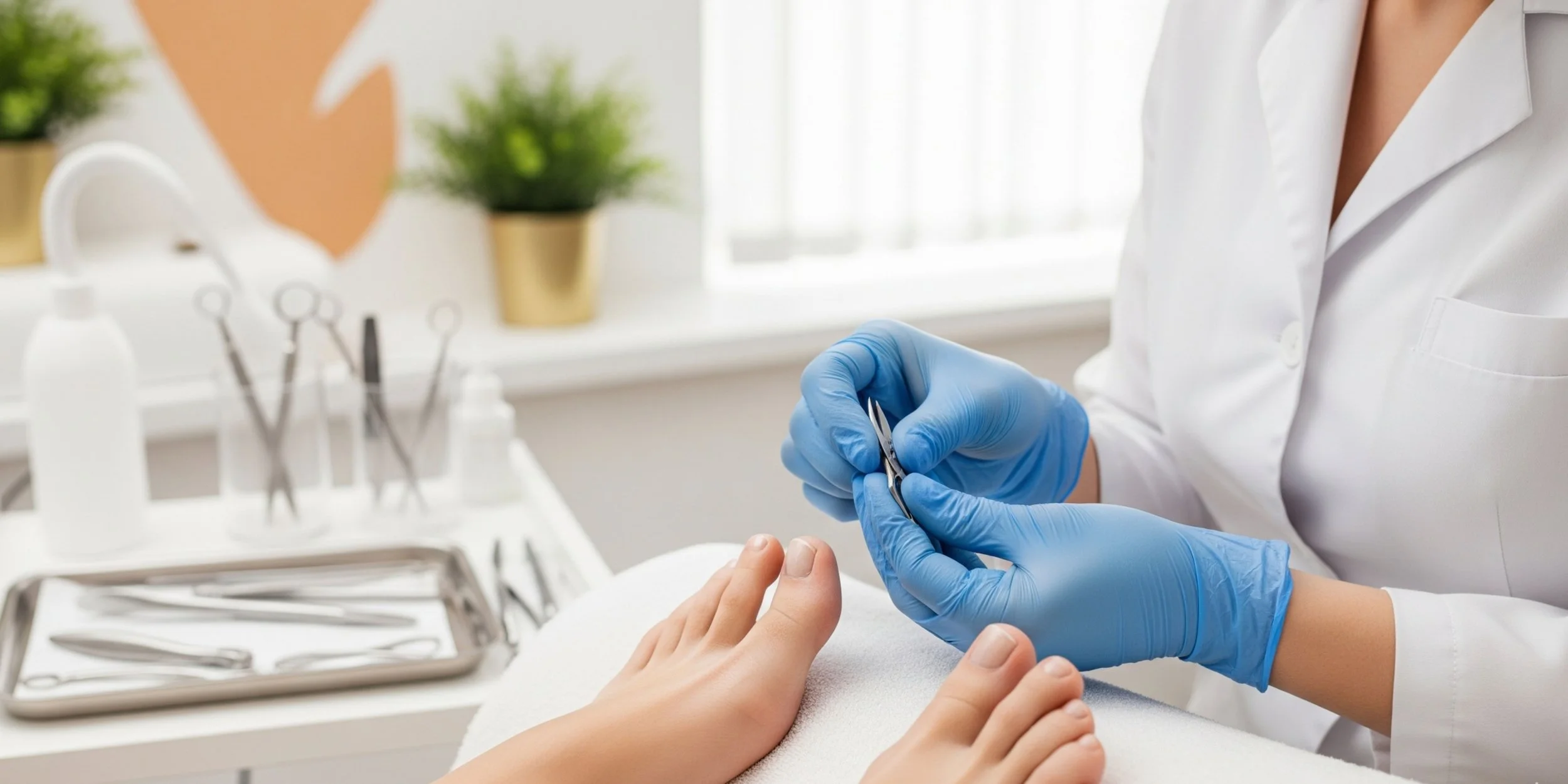What It Really Takes to Heal a Foot Ulcer — Beyond Just Bandages
Foot ulcers are one of the most serious and overlooked complications of diabetes. Many believe a simple bandage or antibiotic cream is enough to fix the problem. But true healing takes a lot more — it’s not just about the wound you see on the outside. It’s about what’s happening underneath: circulation, pressure, nerve function, nutrition, and even mindset.
In this blog, we’ll break down what it really takes to heal a foot ulcer — from inside and out — and why bandages are just one piece of a much larger puzzle.
The Importance of Proper Wound Care
At the core of ulcer healing is effective wound care. This goes beyond cleaning and dressing the wound — it involves creating the right environment for healing. That includes:
Debridement (removal of dead tissue): Without this, the wound bed can't form healthy granulation tissue.
Moist wound healing: Keeping the wound moist (not wet) helps new tissue grow and prevents scabs that slow healing.
Infection control: Bacteria thrive in ulcers, especially if blood flow is poor. Topical antimicrobials and sometimes oral antibiotics are necessary.
Regular monitoring: Weekly or bi-weekly assessments by a podiatrist help track progress and make timely changes.
Wound care is a science — and an art. It needs a skilled clinician who knows how to adapt treatments to how your body is responding.
Nutrition's Role in Ulcer Healing
Your body cannot heal what it doesn’t have the resources for.
Nutrients like protein, zinc, vitamin C, and omega-3s play essential roles in tissue repair, immune defense, and inflammation control. A diabetic patient with poor nutrition will struggle to heal, no matter how advanced their wound care is.
Common challenges:
Malnutrition in elderly diabetics is often unrecognized.
Poor blood sugar control interferes with nutrient delivery and use.
Inflammatory diets high in processed foods can slow healing.
A registered dietitian or diabetes-savvy podiatrist can recommend a nutrition plan or supplements to help your body heal from the inside out.
The Impact of Blood Sugar Levels on Foot Health
Uncontrolled diabetes is the root cause of most foot ulcers. High blood sugar levels affect:
Nerve health (leading to neuropathy)
Blood flow (leading to poor circulation)Immune function (slower response to infection)
Skin integrity (making it fragile and prone to breaking)
The tighter the glucose control, the better the chances for healing.
Aim for:
A1c target as advised by your provider (usually below 7%)
Keeping post-meal spikes under control
Avoiding low blood sugar episodes, which can also complicate care
Healing a foot ulcer without managing blood sugar is like trying to build a house on a crumbling foundation.
Footwear Choices for Ulcer Prevention and Healing
Most foot ulcers are caused or worsened by pressure. That pressure may come from walking, poor shoes, or foot deformities like bunions or hammertoes. Choosing the right footwear can make — or break — the healing process.
Key features of diabetic-friendly footwear:
Custom orthotics or insoles to redistribute pressure
Wide, deep shoes to avoid rubbing
Seamless interiors to reduce friction
Offloading boots or walkers for active ulcers
In some cases, total contact casting or minimally invasive surgery is used to reduce pressure and accelerate healing. Patients often don’t realize how long pressure must be removed — typically for 6 to 12 weeks. And the better the offloading, the faster the healing.
Advanced Treatment Options for Foot Ulcers
When basic wound care isn’t enough, advanced therapies come into play. These can include:
Skin substitutes or grafts: Biologic dressings that stimulate healing
Negative pressure wound therapy: A vacuum system that removes excess fluid and promotes blood flow
Growth factors: Topical agents that speed up tissue repair
Hyperbaric oxygen therapy (HBOT): Boosts oxygen delivery to the wound
Minimally invasive surgery: To correct foot structure or release tight tendons to reduce pressure
These treatments are chosen based on wound stage, location, and the patient’s overall health status. It’s never one-size-fits-all.
The Psychological Aspects of Living with Foot Ulcers
Foot ulcers don’t just affect the body — they impact mental health, independence, and quality of life.
Many patients feel:
Ashamed of the wound or odor
Frustrated by the time it takes to heal
Depressed due to mobility limitations
Fearful of losing their foot
Mental stress can also raise blood sugar levels and impair healing. That’s why emotional support, patient education, and goal-setting are critical.
You’re not just treating a foot — you’re caring for a person.
When to Seek Professional Help
Too often, patients wait until it’s too late. Any wound on a diabetic foot should be considered serious from the start.
Call your podiatrist if you notice:
Redness or swelling around a wound
Drainage, especially if foul-smelling
Black tissue (necrosis) or yellow slough
Fever, chills, or rising blood sugar
Increased pain or numbness
Early treatment can prevent hospitalization, infection, or even amputation. In fact, seeing a podiatrist early reduces amputation risk by 85%.
Tips for Caregivers: Supporting Someone with a Foot Ulcer
Caring for someone with a foot ulcer requires both compassion and practical knowledge.
Key Tips:
Help them maintain daily foot hygiene.
Encourage them to follow their wound care plan.
Assist with mobility to avoid pressure on the wound.
Monitor for signs of infection and report concerns quickly.
Support healthy eating and blood sugar control efforts.
Caregiver Wellness:
Don’t forget to take care of yourself, too — caregiving can be demanding.
Conclusion: A Holistic Approach to Healing Foot Ulcers
Healing a diabetic foot ulcer is more than just applying a bandage. It’s a complex process that requires attention to blood flow, blood sugar, pressure, nutrition, wound care, and emotional well-being.
Ignoring any of these factors can delay healing or lead to severe complications like infection or amputation. The good news? With early intervention, a knowledgeable care team, and a proactive mindset, many foot ulcers can be healed — and future ones prevented.
If you or a loved one is dealing with a foot wound, don’t wait. Book a consultation with a podiatrist who specializes in diabetic wound care. Your feet — and your future — depend on it.
Don’t Ignore a Foot Wound
Even a small sore can turn serious quickly when you have diabetes. Get expert diabetic foot care before it becomes a bigger problem.
Book your appointment today and take the first step toward healing — and keeping your feet healthy for life.











